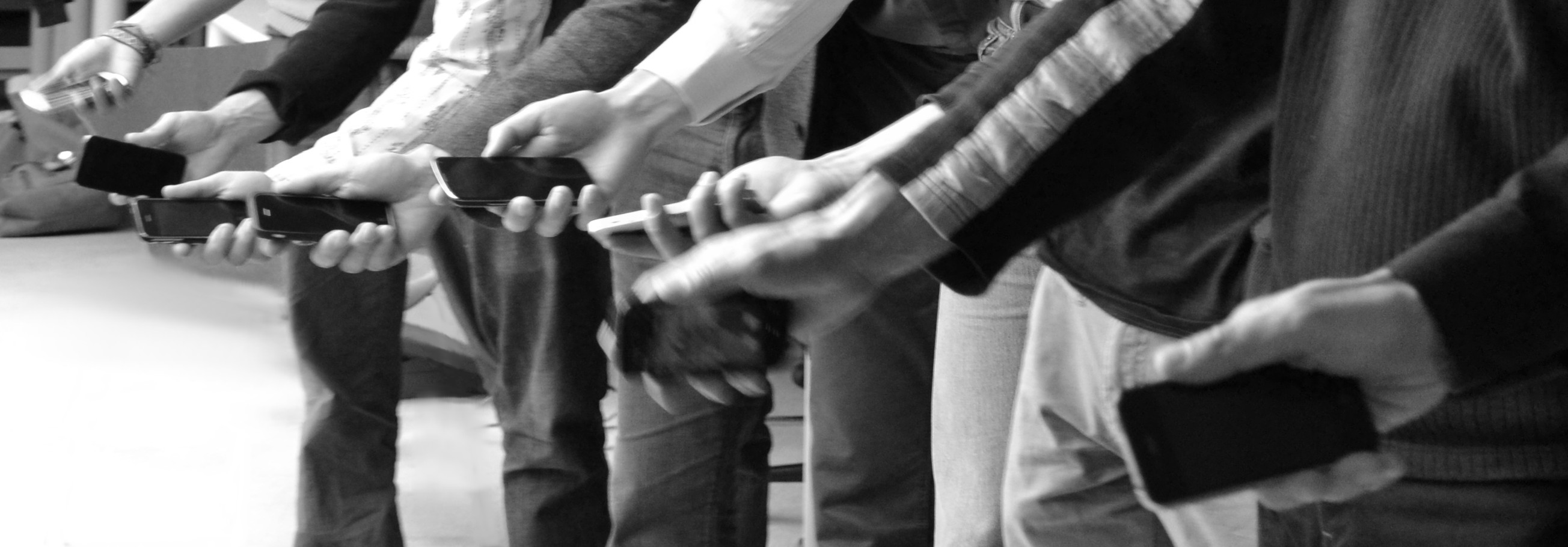This mobile web application has been developed for the Collective Sound Checks that took place in the Studio 13/16 at the Centre Pompidou.
In this scenario, players can record arbitrary percussive sounds (with their voice or using props) using a microphone (and a foot pedal). Once the recording is finished, the players can load the recorded sound on their mobile devices and perform it by shaking the devices. All the devices are beat synchronized to a steady tempo (16th beats on 100 BPM) so that multiple players can easily perform together.
Each sound recording is analysed on the server and segmented into percussive elements that are classified by their intensity. On the mobile device, the concatenative synthesizer generates a sound on each beat. Each sound is selected according to the device motion intensity: the synth plays soft sound segments when the player shakes the device softly, and louder segments when the player shakes the device more vigorously.
The players are encouraged to record phrases with percussive elements of a wide dynamic range. They can experiment with different sound recordings and create an ensemble by recording complementary materials.




